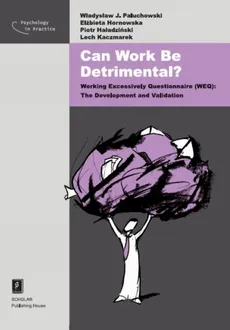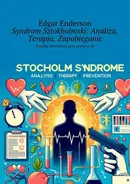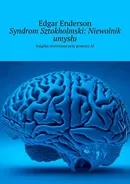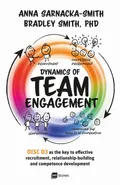Can Work Be Detrimental? Working Excessively Questionnaire (WEQ): The Development and Validation
Psychology in Practice
For some, excessive workload is a source of satisfaction, while for others it stems from the desire to meet one's own and external expectations.
Sometimes a fulfilling job fulfills one's life because it provides everything that is needed to be happy. Work can be an accepted way of escaping from one's emotional problems. In some cases excessive workload results from the fear of losing a job and sometimes from poor work organization. Another reason to work excessively may be that it is financially worthwhile. Workaholism is a harmful consequence of excessive workload. Only deep and thorough analysis differentiates workaholism from excessive workload.
The formal structure of the monograph reflects the development of the stages of the Working Excessively Questionnaire (WEQ) in three chapters. Chapter 1 presents the relationship between excessive workload and workaholism the causes and negative effects of excessive focus on work, and possible theoretical explanations of the phenomenon of workaholism. Chapter 2 discusses the various research methods used in studies of workaholism and describes the foundation of the WEQ and the process of working on its final version. And chapter 3 discusses the correlates of the four scales of the Working Excessively Questionnaire.
- Kategorie:
- Język wydania: angielski
- ISBN: 978-83-7383-704-1
- ISBN druku: 978-83-7383-704-1
- Liczba stron: 128
-
Sposób dostarczenia produktu elektronicznegoProdukty elektroniczne takie jak Ebooki czy Audiobooki są udostępniane online po opłaceniu zamówienia kartą lub przelewem na stronie Twoje konto > Biblioteka.Pliki można pobrać zazwyczaj w ciągu kilku-kilkunastu minut po uzyskaniu poprawnej autoryzacji płatności, choć w przypadku niektórych publikacji elektronicznych czas oczekiwania może być nieco dłuższy.Sprzedaż terytorialna towarów elektronicznych jest regulowana wyłącznie ograniczeniami terytorialnymi licencji konkretnych produktów.
-
Ważne informacje techniczneMinimalne wymagania sprzętowe:procesor: architektura x86 1GHz lub odpowiedniki w pozostałych architekturachPamięć operacyjna: 512MBMonitor i karta graficzna: zgodny ze standardem XGA, minimalna rozdzielczość 1024x768 16bitDysk twardy: dowolny obsługujący system operacyjny z minimalnie 100MB wolnego miejscaMysz lub inny manipulator + klawiaturaKarta sieciowa/modem: umożliwiająca dostęp do sieci Internet z prędkością 512kb/sMinimalne wymagania oprogramowania:System Operacyjny: System MS Windows 95 i wyżej, Linux z X.ORG, MacOS 9 lub wyżej, najnowsze systemy mobilne: Android, iPhone, SymbianOS, Windows MobilePrzeglądarka internetowa: Internet Explorer 7 lub wyżej, Opera 9 i wyżej, FireFox 2 i wyżej, Chrome 1.0 i wyżej, Safari 5Przeglądarka z obsługą ciasteczek i włączoną obsługą JavaScriptZalecany plugin Flash Player w wersji 10.0 lub wyżej.Informacja o formatach plików:
- PDF - format polecany do czytania na laptopach oraz komputerach stacjonarnych.
- EPUB - format pliku, który umożliwia czytanie książek elektronicznych na urządzeniach z mniejszymi ekranami (np. e-czytnik lub smartfon), dając możliwość dopasowania tekstu do wielkości urządzenia i preferencji użytkownika.
- MOBI - format zapisu firmy Mobipocket, który można pobrać na dowolne urządzenie elektroniczne (np.e-czytnik Kindle) z zainstalowanym programem (np. MobiPocket Reader) pozwalającym czytać pliki MOBI.
- Audiobooki w formacie MP3 - format pliku, przeznaczony do odsłuchu nagrań audio.
Rodzaje zabezpieczeń plików:- Watermark - (znak wodny) to zaszyfrowana informacja o użytkowniku, który zakupił produkt. Dzięki temu łatwo jest zidentyfikować użytkownika, który rozpowszechnił produkt w sposób niezgodny z prawem. Ten rodzaj zabezpieczenia jest zdecydowanie bardziej przyjazny dla użytkownika, ponieważ aby otworzyć książkę zabezpieczoną Watermarkiem nie jest potrzebne konto Adobe ID oraz autoryzacja urządzenia.
- Brak zabezpieczenia - część oferowanych w naszym sklepie plików nie posiada zabezpieczeń. Zazwyczaj tego typu pliki można pobierać ograniczoną ilość razy, określaną przez dostawcę publikacji elektronicznych. W przypadku zbyt dużej ilości pobrań plików na stronie WWW pojawia się stosowny komunikat.
Preface 9 Chapter 1 Excessive workload 13 Work and its place in life 13 The psychopathology of work 16 Workload 16 Work addiction 21 Workaholism as a behavioral addiction (non-chemical addiction) 26 Workaholism: The moderating effects of individual and contextual factors 28 The most obvious negative consequences of workaholism 33 Subjective effects 33 Work-family conflict 34 The organizational effects 36 Theoretical explanations of workaholism 36 Chapter 2 Refinement and further validation of the working excessively questionnaire (WEQ) 39 Various measures of workaholism 39 Questionnaire to measure work addiction (WART) 39 Spence and Robbins’ scales to test workaholism (WorkBAT) 41 Abbreviated scale to test workaholism (WorkBAT-R) 42 Sub-scale of the questionnaire Schedule for Nonadaptive Personality (SNAP-Work) 42 Scales for testing susceptibility to workaholic behaviors (SWBT) 43 Dutch Work Addiction Scale (DUWAS) 44 Workaholism Analysis Questionnaire (WAQ) 44 Bergen Work Addiction Scale (BWAS) 45 The Scale of Being Absorbed by Work (SZAP) 46 Multidimensional Questionnaire for Workaholism Assessment (WKOP) 46 Conclusions 47 Methodological consequences 48 Conceptualizing our questionnaire 49 Item pool development 50 Final refinement of the questionnaire 52 The sample 52 Scale statistics 54 Scale reliabilities and intercorrelations 56 Criterion analysis 56 Criterion-related and construct validity Correlations with self-reported symptoms of work addiction 63 Content sub-scales analysis 64 Summary 67 Chapter 3 Analyzing correlates of the Working Excessively Questionnaire (WEQ) 69 Scales and questionnaires used in the research 69 Multidimensional Self-Esteem Inventory (MSEI) 71 Internal-External Locus of Control at Work Scale 71 Temperament Survey for Adults (EAS-TS) 71 The Temperament and Character Inventory (TCI) 72 The Hope Scale 72 Need for Achievement Questionnaire 73 The Relationships Questionnaire (RQ) 73 The Lack of Control over Work Scale and its correlates 73 The relationship between lack of control over work and locus of control 75 The relationship between lack of control over work and identity integration and other components of self-esteem 76 The relationship between lack of control over work and work seniority 78 The relationship between lack of control over work and sense of mission 79 The relationship between lack of control over work and temperament traits 83 Conclusion 85 Perfectionist Working Style Scale and its correlates 86 The relationship between perfectionist working style and perceived self-control and other components of self-esteem 87 The relationship between perfectionist working style and locus of control 89 The relationship between perfectionist working style and hope for success 91 The relationship between perfectionist working style and temperament traits 92 Conclusion 93 General Beliefs about Work Scale and its correlates 94 The relationship between assigning a specific role to work and the assessment of a person’s own competences and intimate relationships 95 The relationship between the attachment pattern and beliefs about work 96 The relationship between assigning an important role to work, sociability, and a person’s hope for success 97 Defining a person’s value based on their work and their willingness to enter into intimate relationships 98 The relationship between general beliefs about work and sense of mission 99 The relationship between general beliefs about work and traits of temperament and character 100 Conclusion 100 Perceived Oppressiveness of Organization Scale and its correlates 101 The relationship between perceiving the organization as oppressive and locus of control and tendency to react with negative emotional arousal 103 The relationship between work position and perceived oppressiveness of the organization 106 The relationship between perceived oppressiveness of the organization and defensive self-enhancement 107 The relationship between perceived oppressiveness of the organization and sociability 108 Conclusion 108 Conclusion 110 References 112



























































